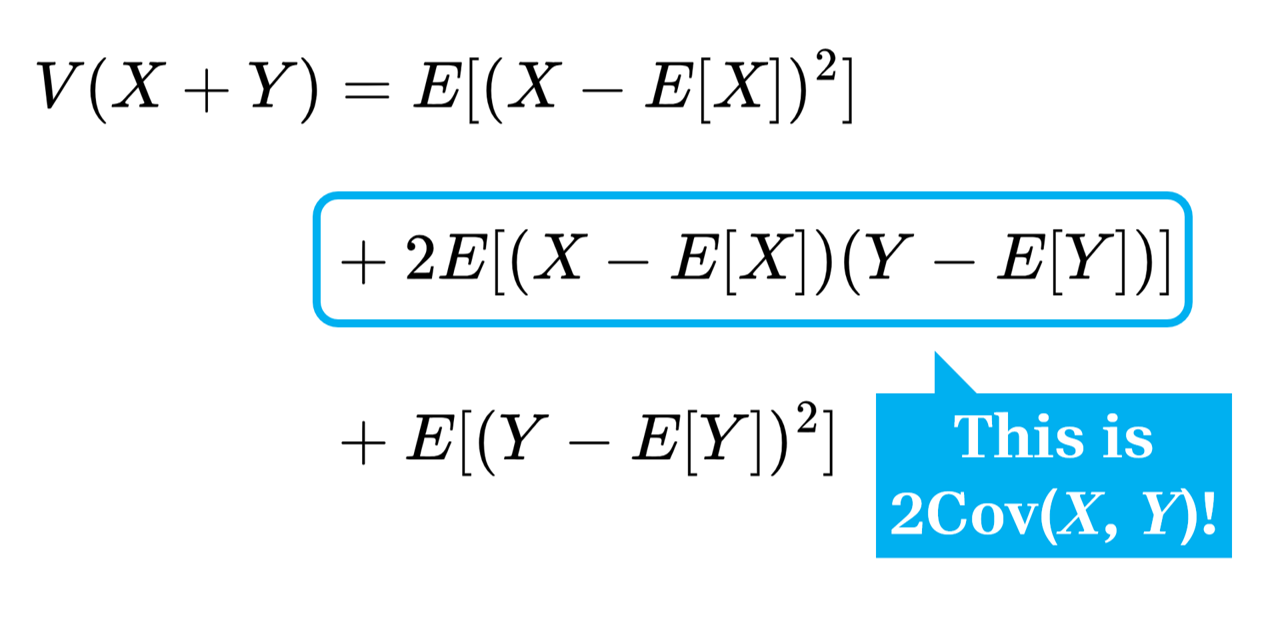The origin of 2𝘊𝘰𝘷(𝘟, 𝘠) in 𝘝(𝘟 + 𝘠)
The cross-product term in the square of a binomial expansion
For the variance of a sum of two random variables, I previously wrote that
\(V(X+Y) = V(X) + V(Y) + 2\text{Cov}(X, Y)\)
Where does the term 2Cov(X, Y) come from? Let’s dive into the mathematics.
If you re-write V(X+Y) according to its definition as an expected value, you will see that it is actually a binomial expansion with a power of 2.
\(\begin{align*}
V(X+Y) &= E\{[(X+Y)−(\mu_x+\mu_y)]^2\} \\
&= E\{[(X−\mu_x)+(Y−\mu_y)]^2\}
\end{align*}\)
To make the notation easier to read, let’s use the following substitutions:
\(A = X-\mu_x\)
\(B = Y-\mu_y\)
Plugging A and B into that expectation,
\(\begin{align*}
V(X+Y) &= E[(A+B)^2] \\
&= E[A^2 + 2AB + B^2] \\
&= E(A^2) + 2E(AB) + E(B^2)
\end{align*}\)
Let’s now write that final line in terms of X and Y.
\(\begin{align*}
V(X+Y) &= E[(X-\mu_x)^2] + 2E[(X-\mu_x)(Y-\mu_y)] + E[(Y-\mu_y)^2] \\
&= V(X) + 2\text{Cov}(X,Y) + V(Y)
\end{align*}\)
As you can see, the covariance comes from the cross-product term in a binomial expansion.



